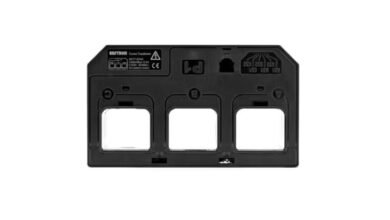Seasonal Sales Strategies: Leveraging E-commerce Platforms for Ocean City’s Tourism Peaks

Ocean City businesses know the rhythm of the year: booming tourist peaks in summer, quieter off-seasons, and everything in between. If you’re a local business, each season brings its own challenges and opportunities. To truly take advantage of the tourist rush, it’s crucial to have a seasonal sales strategy that makes the most of e-commerce platforms. By pairing strong online visibility with localized appeal, you can extend your reach beyond the beach and keep customers coming back year-round.
Let’s discuss some practical ways to maximize sales with e-commerce tools and capture that summer spirit — long after the sun sets on the season.
1. Anticipate Demand with Smart Inventory Management
Ocean City’s summer crowds are ready to buy, but nothing stalls a sale faster than an “Out of Stock” notification. Inventory management should be front and center of any seasonal sales strategy. Predicting demand can be challenging, especially when tourist numbers fluctuate, but e-commerce platforms offer built-in tools that can make inventory management easier and more accurate.
Consider using Shopify’s inventory tracking features or WooCommerce’s stock management tools to set up notifications when stock levels drop. With these tools, you can see which products are selling the fastest and adjust your orders to match customer demand. This is especially helpful for popular seasonal items like beachwear, local souvenirs, and seasonal snacks.
To get more granular, consider a seasonal sales projection model. Look at past sales data to identify trends by month or even by week during peak season. Use this data to estimate demand for specific products, so you’re well-prepared without overstocking. Plus, you can adjust for off-season inventory more easily and keep the essentials on hand.
2. Run Online Promotions to Reel in Tourists
Everyone loves a good deal — especially tourists who may be less price-sensitive when they’re on vacation but still appreciate discounts or special promotions. E-commerce platforms like Shopify offer robust tools for creating and managing online promotions, allowing you to target deals to specific customers or run flash sales during peak weekends.
One option is to set up a Shopify popup that appears when customers visit your online store, offering a 10% discount for those who sign up for your email list. Not only does this help you capture new customer information, but it also encourages tourists to make a purchase they may otherwise put off.
You could also offer online-exclusive bundles, such as a “Beach Day Kit” that includes towels, sunscreen, and other essentials. Tourists may prefer to order these items online for in-store pickup, which reduces the hassle of carrying more baggage to the beach. Flash sales, weekend discounts, or buy-one-get-one-free deals are also effective ways to encourage immediate purchases. Seasonal sales create urgency, and combining this with online promos ensures you’re primed for the peak season.
3. Infuse Local Culture into Your Online Presence
Tourists come to Ocean City to experience its unique culture, so why not reflect that in your online store? Showcasing the local charm and character can make your e-commerce site feel more authentic, inviting customers to take a bit of Ocean City home with them.
For example, highlight local artisans or feature Ocean City-inspired themes in your product photography. If you’re selling apparel, consider seasonal designs like beach scenes, crabbing motifs, or references to Ocean City landmarks. When you tell a story that’s rooted in your town’s heritage, it resonates with visitors who want to keep their vacation memories alive.
4. Optimize for Mobile Purchases
Travelers may not have access to their laptops, but they do have their smartphones. Mobile optimization is essential for businesses that want to attract tourists who shop on the go. A staggering 79% of smartphone users have made a purchase online using their device in the last six months. Ensuring that your website and checkout process are fully mobile-optimized is crucial, especially when you’re serving a tourism-focused customer base.
Start by testing your website’s mobile experience. Look for issues in navigation, load time, and clarity of product photos. The goal is to create a seamless mobile shopping experience that allows customers to browse your store, add items to their cart, and check out easily — whether they’re on the boardwalk or relaxing at a beachside café.
5. Engage with Tourists Year-Round
Your relationship with tourists doesn’t have to end when they leave Ocean City. An effective seasonal strategy includes year-round customer engagement to keep your business top-of-mind. One way to do this is through email marketing, which lets you send updates on new products, off-season discounts, or exclusive previews to your email list. Remember that Shopify popup you used to offer a signup discount? It can serve as the first step in building long-term relationships.
Another approach is to target repeat tourists or those interested in returning. Using geo-targeted ads on Facebook or Instagram, you can remind former customers about your brand during peak travel times or before special Ocean City events. If a customer bought a beach towel from you last year, they might love to see your new designs and plan to visit your store again on their next vacation.
Conclusion
For Ocean City businesses, a well-planned seasonal sales strategy can make the most of tourist traffic and keep customers coming back, year after year. Leveraging e-commerce tools to manage inventory, offer online promotions, showcase local culture, optimize for mobile, and maintain off-season engagement can turn tourist peaks into lasting success.
The key is to combine these tactics in a way that feels natural to your brand and resonates with Ocean City’s unique charm. So, take the plunge — there’s a wave of potential customers out there, and with a bit of strategy, your business can thrive in every season.



